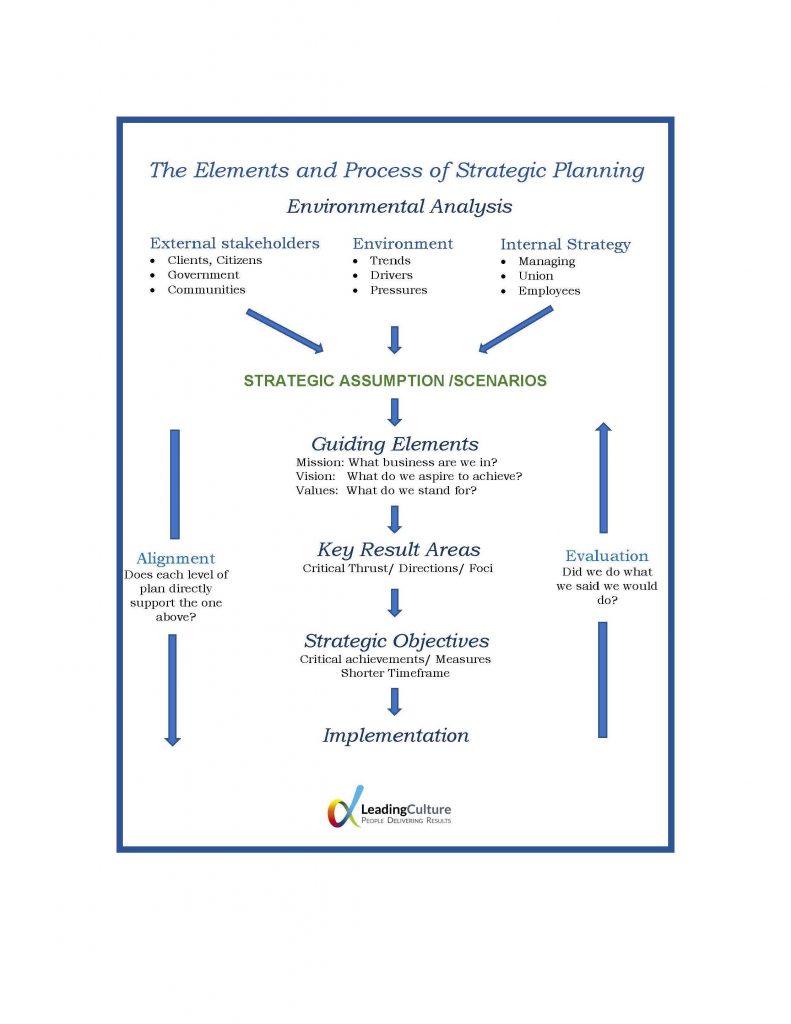
Craft your Strategy
Creating a clear organizational vision is essential for businesses to take control of their future, guide their work. Having a clear strategic direction, and business goals to achieve this vision is key. It increases employee understanding and commitment. It clarifies customer and supplier expectations which in turn provide focus for operational planning, and establishing priorities
A clear strategy guides day-to-day decision-making, With a well-defined vision, clear strategy organizations can direct events providing a solid foundation for future growth and success
Step 1: Conduct an Environment Scan
The environmental analysis involves identifying and assessing emerging developments, both inside and outside the organization, which could affect your strategic directions and operations, and including these developments in your planning considerations.
There are four critical environmental elements to be considered and analyzed:
- the organization environment;
- the external environment (trends and characteristics);
- external/internal stakeholders (individuals and organizations who “care” about the performance of your organization);
- internal stakeholders (everyone within your organization who has a vested interest in the performance of the company).


Step 2: Shape your Mission, Vision, and Values
The mission of the organization describes the reason for its existence, such as its purpose, goals, and primary activities.
The vision outlines the desired future for the organization in all major areas of organizational life, such as growth, development, culture, and innovation. It provides a clear picture of what the organization hopes to achieve and where it wants to go.
The values of the organization define what it stands for and the principles that guide its behavior and decision-making. They reflect the organization’s beliefs and priorities, and are the foundation for creating a positive organizational culture and achieving its mission and vision.
Step 3: Establish your Strategic Goals
To ensure the achievement of the desired results outlined in the vision, it is essential to identify and prioritize the areas of management focus that require significant progress.
This includes setting time frames and creating statements of strategic objectives that align with the organization’s priorities.
By focusing on these key areas, the organization can make steady progress towards its vision and purpose. The goals establish a clear direction for the organization’s activities, and ensure that its efforts are aligned with its vision.


Step 4: Create Strategic Objectives
Strategic Objectives represent the broad performance targets within each strategic goal (including priorities, time frames, and accountabilities).
It is clear where the organization is going, and the strategic objectives provide focus for the management team.
Strategic Objectives represent the transition point from the “What” will be achieved, to “HOW” it will be achieved. This process translates the strategic direction of the organization into concrete, measurable actions.
The following dialogue underlines the importance of setting direction.
“Alice: Would you tell me, please, which way I ought to go from here?
The Cheshire Cat: That depends a good deal on where you want to get to.
Alice: I don’t much care where.
The Cheshire Cat: Then it doesn’t much matter which way you go.
Alice: …So long as I get somewhere.
The Cheshire Cat: Oh, you’re sure to do that, if only you walk long enough.”
Lewis Carroll, Alice in Wonderland
